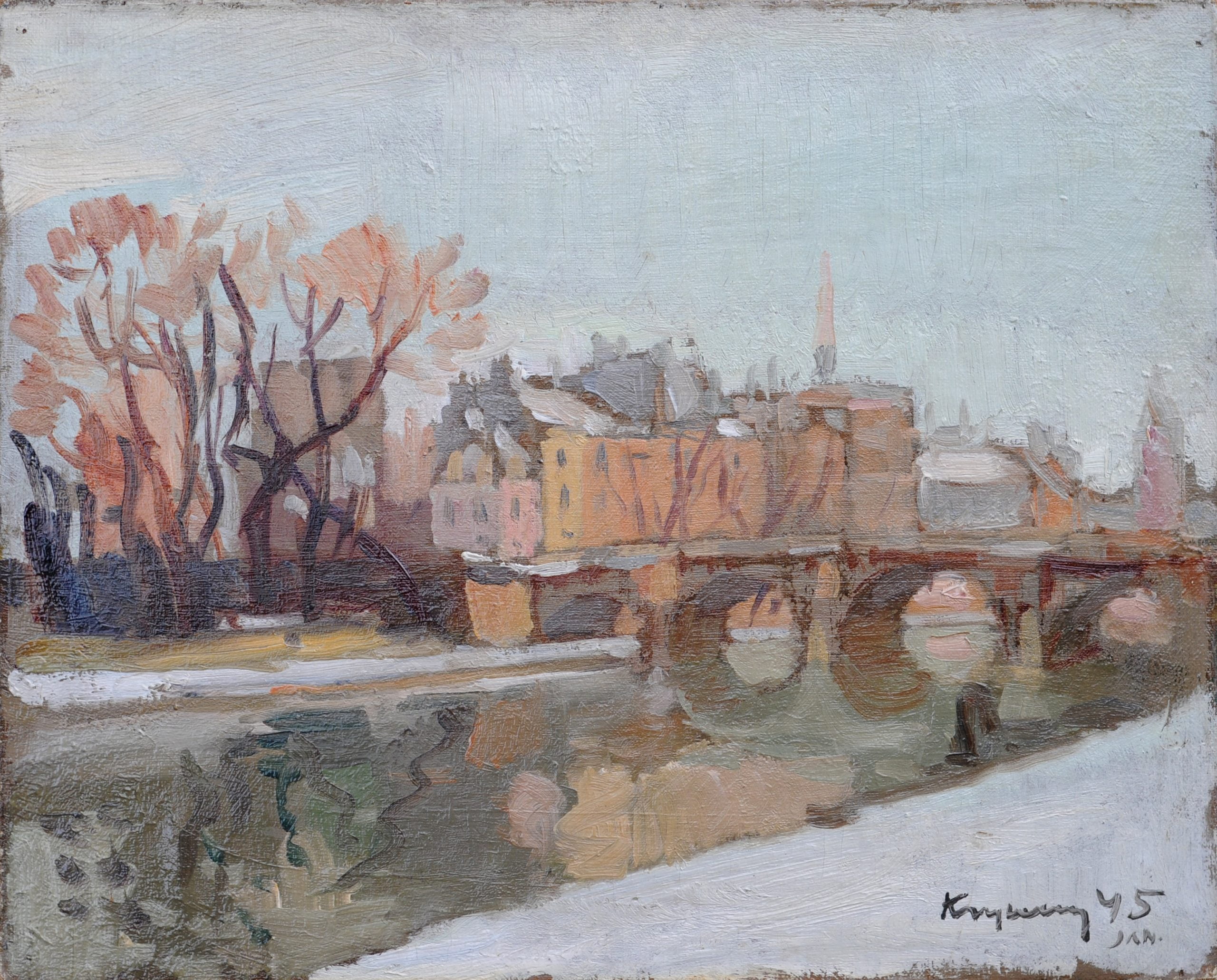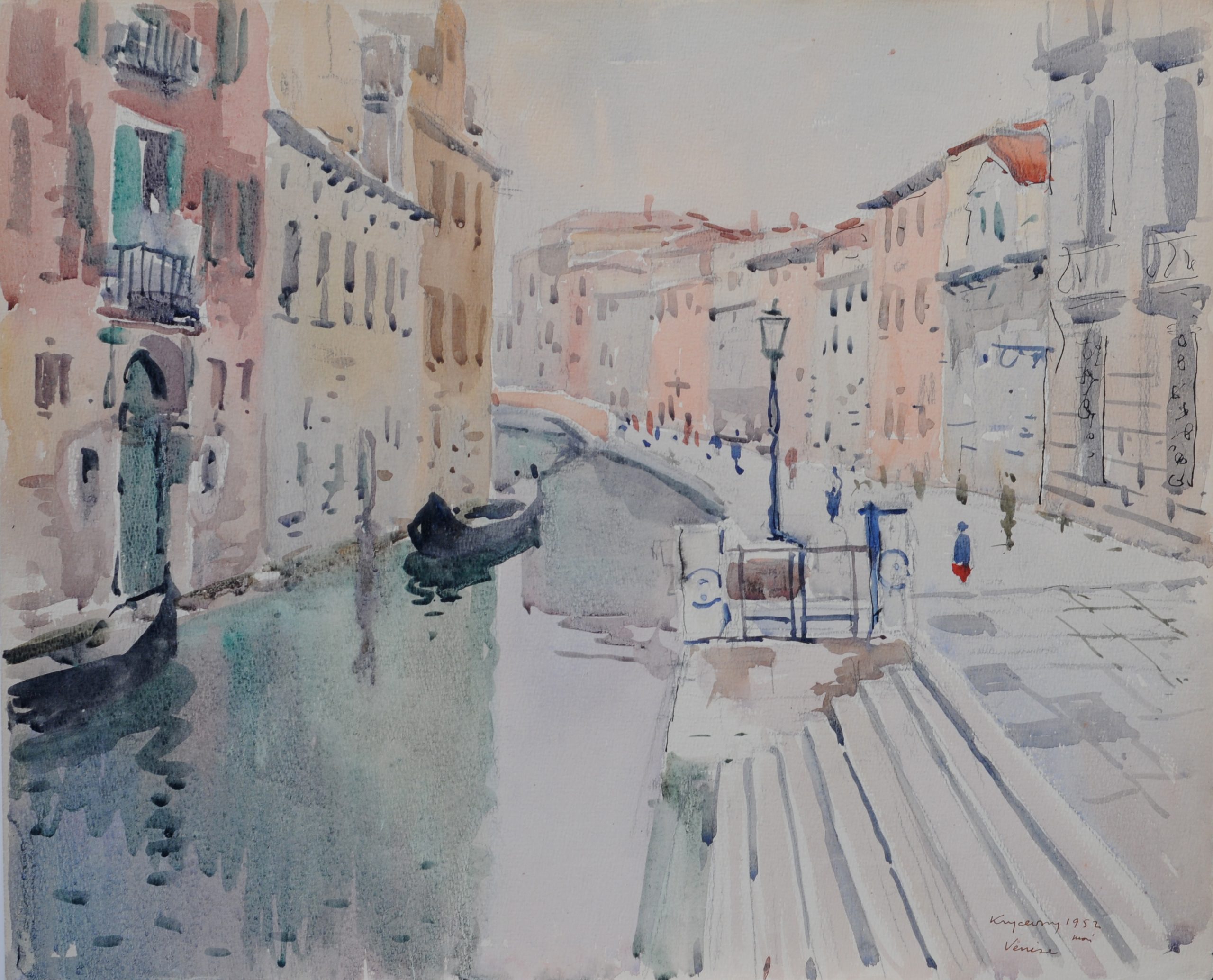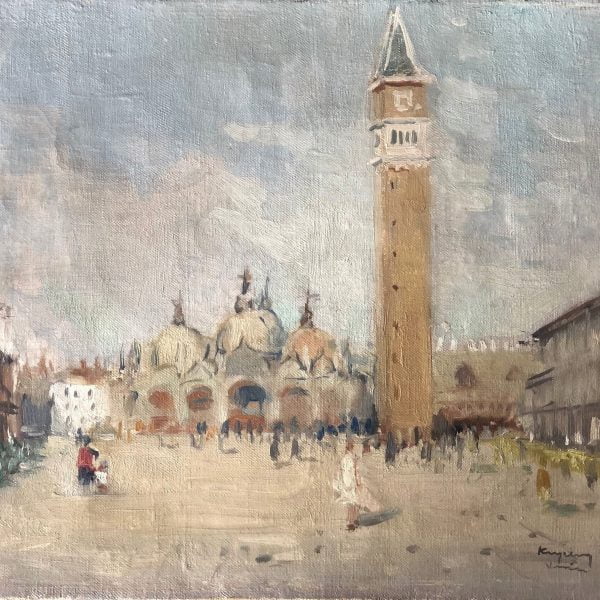
Mykola Krychevsky was born on November 24, 1898 in Kharkiv, in the family of artist and architect Vasyl Krychevsky and Varvara Marchenko. He received his primary artistic training at his father’s studio at the Kyiv’s Art Institute. In addition to art Mykola became involved in theatre. In 1919 he joined the Mykola Sadovsky’s troupe and went for a tour to Transcarpathia (Czechoslovakia). During this stay he studied art at the studio of Joseph Bokshai in Uzhgorod. Continuing the tour in 1926 the artist arrived to Prague where he set apart from the troupe and enlisted to study art at the School of Applied and Industrial Art. He studied decorative art in the studio of Professor Arnošt Hofbauer. Upon graduating in 1929, Mykola Krychevsky moved to Paris where he joined local Ukrainian artistic community – “Le Groupe Ukrainien” (“The Ukrainian group”). At first in Paris the artist worked as textile graphic designer and a set designer at local theatres (Le Théâtre des Arts and Le Théâtre Hebertot). He later became skilful watercolourist and developed his authentic style that combined watercolour with ink drawing. Mykola Krychevsky travelled extensively in France during 1930s visiting Menton, Nice, Cauterets, Rennes where he created numerous landscape watercolours. In 1939, with the outbreak of the Second World War, he volunteered to the army and served most of his time in Marseille. In 1944 with assistance of the Ukrainian Library “Kobzar” in Paris the artist published “7 Woodcuts”, a portfolio edition created during his stay in Uzhhorod. In 1945 he worked on illustrations for the French edition of “Taras Bulba” by Mykola Hohol, creating 45 ink and brush drawings and 9 calligraphy sets. Since 1948, twice a year, Mykola Krychevsky travelled to Venice where he painted plein-air. Since 1954 he regularly visited the United States of America staying in California with his brother Vasyl Vasylovych Krychevsky, brother’s wife Olena and daughter Kateryna. The artist also visited his step-sister (on his mother’s side) Mariya Kobakhidze and her husband Givi first in New York and then in Washington, D.C. Later in his life the subject of Ukraine became especially noticeable in Mykola Krychevsky’s artwork. Especially, this became a subject matter of a number of landscapes created during 1957-1961. The artist died in Paris on September 11, 1961 and was buried at The Parisian cemetery of Bagneux. Mykola Krychevsky actively exhibited his works during his life time starting with personal exhibition in Uzhhorod. His works were exhibited in Salon d’Automne and Salon des Indépendants, Salon des Surindépendants, Salon des Portraits contemporains in France. The artist exhibited at a number of Paris galleries such as Studio 28, Galerie Zak, Galerie de la Cité and Galerie de l’Atelier Français, as well as in the galleries and museums in Washington, New York, Philadelphia, Toronto, Rome, Warsaw and Lviv. The artist worked in various art media (watercolour, gouache, oil, woodcut and drawing) and genres (landscape, still-life, portrait, book illustration and set design). In Europe he became known for his masterful “post-impressionism” watercolour landscapes. Mykola Krychevsky left behind about seven thousand artworks that remain today in public and private collections worldwide. In 2018 Museum of Diaspora in Kyiv, Ukraine held an exhibition of works by Mykola Krychevsky dedicated to 120 years of artist’s birth anniversary. An album ‘Mykola Krychevsky. Artist and the World’ was published in conjunction with the opening of the exhibition.





